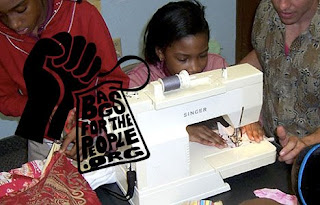
I'm pretty sure I'm one of the last people in the world to have read
Fast Food Nation (as cleverly alluded to on satirical blog and propagandist of the "new" environmental movement
Stuff White People Like), but I finally got around to reading it and thoroughly enjoyed it.
I'm a big Michael Pollan fan, but I understand that people might not literally want to know what they're eating. For people with weaker stomachs (but still care about what they're funding/eating and more importantly, what their children are eating),
Fast Food Nation is for you.
Fast Food Nation analyzes the growth of the fast food industry from a historical, market-based point of view. Eric Schlosser discusses the rise of many fast food chains, most thoroughly McDonald's but also Yum! Brands' Taco Bell, KFC, and Pizza Hut; Subway; Burger King; Jack in the Box; and Wendy's.
His main focus is on the rampant social justice issues with fast food rather than the abundance of fat and sugar in your McMeal, which is a nice departure from the "air of moral superiority that often accompanies" (257) advocates of vegetarianism/veganism.
After watching Schlosser in
Food, Inc., I thought that this book was going to be an anti-corporate work denouncing multinational corporations and promoting veganism. I was glad to read, right in the introduction, that Schlosser was mostly worried about the welfare of our nation's children, whom fast food is mostly marketed to, and that he had eaten a good amount of fast food while conducting research for this book.
Schlosser paints the fast food industry as one that not only goes to any means necessary to make a profit, but one that blatantly disregards the welfare of the people who work for it and uses totalitarian tactics to silence its critics.
He discusses the high school dropouts who work behind the counters of their local fast food restaurants. These are young people who are generally not educated about their rights and are exploited by the system to work long hours, subject to menial labor which ultimately doesn't leave them with any valuable skills for their next job.
He continues with narrative about the factory farms where cows are raised and potatoes are grown. He discusses a lot of the same facts that were discussed in Food, Inc. and the Omnivore's Dilemma - namely that the way that factory farms are set up now promote the evolution and spread of super viruses/bacteria such as e. coli 0157:H7.
Schlosser offers a rare, behind the scenes view of meatpacking/slaughterhouse corporations. These sections were the parts of the book I found most disturbing - on several levels.
Though meatpacking is a highly skilled job, most of the employers are illegal immigrants, who can not read/write English, who have no skills, and are getting paid minimum wage. The corporations keep it this way because these workers are least likely to unionize for fear of losing their job and least likely to demand health care, which is much needed on this job. This keeps prices down and profits up.
Lurking above all of this is the mega-power of these super corporations on a political scale. One of the most infuriating facts is that the United States Department of Agriculture (USDA) does not have the power to recall meat. Even if half of the nation's beef was infected with e. coli, the government lacks the legal authority to recall the meat. Additionally, the blatant disregard for human safety in the name of profit is sickening.
Schlosser finishes by reminding the reader that the US is a capitalist society - which means that, ultimately, the corporation responds to the consumer. With these super sized companies, it's hard to remember that the consumer is still the one in control. To get these corporations to change their practices, people need to demand change - but before this, people need to become aware.
Conclusion? You probably won't get disgusted by the depiction of the actual food in this book, but it would be hard to suppress the anger and indignation from discovering that many of our nation's worst social justice issues are funded by the sale of Big Macs and Happy Meals.
(A side note: I'm also pretty sure that this book is on the reading list for Professor Fuisz's Humanities 011 class on banned books... I do know that it's on some class' required reading list. Does anyone know?)




















